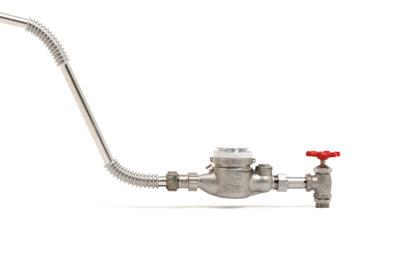
2 minute read
Nickel alloys Ni-Hard
Ferrite is the atomic structure of mild steels that exists below ~727°C (1,340°F), while austenite is the atomic structure of steel that exists above this temperature. Austenite is a non-magnetic solid solution of iron and carbon, while ferrite is magnetic with a lower carbon solubility than austenite. When steel is cooled below ~727°C, excess carbon is tied up as an iron and carbon compound known as cementite. Cementite and ferrite form a multilayered structure called pearlite, which is present as ‘islands’ within the ferrite matrix. Alloy steels and castings account for around 9% of nickel production and provide specific characteristics for specialised and often critical applications. One such material is Ni-Hard. Heavier sections may require nickel Ni-Hard is a generic name for a levels up to 5.5% to avoid the formafamily of white cast irons, alloyed tion of pearlite. It is important to limit with nickel and chromium, suitable nickel content to the level needed for low impact, sliding abrasion for to control pearlite as excess nickel both wet and dry applications. increases the amount of retained There are three types of Ni-Hard: austenite and lowers hardness. Type 1, Type 2 and Type 4. Each has slight variations in composition between ASTM and EN specifica- Typical applications: tions, shown in the table below. Ni-Hard Types 1 and 2 Nickel is vital in optimising hardness • Metal-working rolls and thus wear resistance. Nickel • Grinding mill liners content increases with section size • Pulveriser rings or cooling time of the casting to • Slurry pump parts inhibit pearlitic transformation. For • Grinding media castings of 38–50 mm (1½–2”) thick, Ni-Hard Type 4 3.4% to 4.2% nickel is sufficient to • Slurry pump parts suppress pearlite formation which • Impact blow bars forms as the casting mold cools.
Compositions of the Ni-Hard irons
Advertisement
Grade
Chemical composition* (weight %) C Ni Cr Si Mn Mo S P
ASTM A532
Ni-Hard 1 Class 1, Type A 2.8–3.6 3.3–5.0 1.4–4.0 0.8 2.0 1.0 0.15 0.3
Ni-Hard 2 Class 1, Type B 2.4–3.0 3.3–5.0 1.4–4.0 0.8 2.0 1.0 0.15 0.3
Ni-Hard 4 Class 1, Type D 2.5–3.6 4.5–7.0 7.0–11.0 2.0 2.0 1.5 0.15 0.10
EN 12513
Ni-Hard 1 EN-JN2039 3.0–3.5 3.0–5.5 1.5–3.0 0.8 0.8 – 0.10 0.10
Ni-Hard 2 EN-JN2029 2.5–3.0 3.0–5.5 1.5–3.0 0.8 0.8 – 0.10 0.10
Ni-Hard 4 EN-JN2049 2.5–3.5 4.5–6.5 8.0–10.0 1.5–2.5 0.3–0.8 – 0.08 0.08 * Single values are maximums







